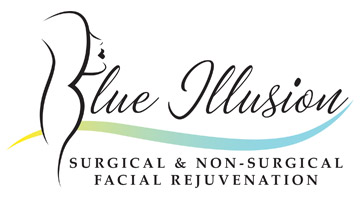Septoplasty and rhinoplasty can complement each other extremely well. Septoplasty corrects the structure of the nose, allowing for rhinoplasty that better modifies the external appearance. Together, they can result in significant functional and cosmetic improvements. While some people may choose one or the other, in many cases, rhinoplasty and septoplasty are the perfect duos.
Rhinoplasty Vs. Septoplasty
What is a septoplasty?
A septoplasty is a medical procedure that straightens the septum of the nose. The septum divides the nose into two halves — it’s like a flat wall made of bone and cartilage. Ideally, we want a straight septum, but the septum can be crooked to one side and result in sinus problems.
A straight midline septum allows for smooth airflow in our nostrils, but a crooked septum can cause turbulence. Think of it like the airflow around an airplane. “Laminar” is a smooth airflow we all want when we’re flying. Turbulent airflow means the air moves in a circular motion and makes for a bumpy ride. In the nose, turbulence causes drying currents and breathing difficulties. This turbulence also creates snoring issues. Many people who get their septum straightened have a smoother “laminar” airflow. They snore less, breathe better, and the sinuses work as they should.
A septoplasty allows us to straighten the septum to improve the function of the sinuses. It’s done through a small incision in the front of the nose with minimal removal of bone and cartilage.
What is a rhinoplasty?
This is the cosmetic procedure that allows us to change the external appearance of the nose. When someone wants to correct the hump, crookedness, or visible injury on their nose, we elect to use a rhinoplasty. This surgery on the outside of the nose can involve changing the shape of the cartilage at the tip of the nose or changing the nasal bones. Essentially, it’s a conservative re-breaking of the nose.
The primary difference between rhinoplasty and septoplasty is the purpose. A septoplasty is a functional procedure while a rhinoplasty is cosmetic, but there is some crossover.
How Septoplasty and Rhinoplasty Work Together
These procedures can complement each other well. To get a good result on the rhinoplasty, some patients need to have the septum straightened as well. There’s an old saying that may make more sense once you understand the septum: “As the septum goes, so goes the nose.”
Essentially, straightening the septum inside helps the surgeon better straighten the outside as well. If the septum is crooked, the outside will be crooked. But that isn’t always the entire problem with the outside. You may need to remove a small hump, realign the bones of the outer nose, or work on the cartilages on the tip of the nose. But a key part of this procedure is first straightening the septum — which makes it logical to do these procedures together.
A patient may opt not to have a septoplasty and rhinoplasty together for a few reasons:
- They don’t want anything to change externally.
- The patient is young and shouldn’t have rhinoplasty, but the septum is causing severe sinus problems.
You can do the septoplasty by itself. If the septum is straight, you could do the rhinoplasty by itself. But if the septum is not straight, a septoplasty should accompany the rhinoplasty.
Think of it as a home renovation. If you have a solid structure, you can focus on cosmetic updates. But if the subfloor is weak and the walls aren’t plumb, you have to repair the structure before you can move to the decor and paint.
Septoplasty and Rhinoplasty FAQs
Is septoplasty covered by insurance?
Generally, a septoplasty is covered by insurance.
Rhinoplasty procedures tend to not be covered by insurance because it’s considered cosmetic procedure. This can be a hindrance for many patients. While we can do a septoplasty without a rhinoplasty, when a patient has a significant cosmetic deformity, we strongly recommend coupling these procedures together. If there are financial concerns, wait until it’s possible to do them together. If you fix one without the other, it’s never as an ideal of a solution.
How long does the procedure take?
A septoplasty is a relatively quick procedure that takes 30 – 45 minutes.
Rhinoplasty can take a little longer because of the finesse involved. Even one millimeter can make a difference in the outward appearance. Expect this procedure to last 2-3 hours.
What do septoplasty and rhinoplasty recovery look like?
Splints from a septoplasty are removed 4-6 days after the procedure. Once the splints are removed, the person recovers quickly and can return to work. External casts are sometimes placed for rhinoplasty. These are typically removed within 4-6 days as well.
Expect an office appointment in this 4-6 day time period to remove splints or external casts. At that point, patients can start a saline regimen. For some rhinoplasty patients, we prescribe antibiotics for 7-10 days after the procedures. We also schedule a final follow-up four weeks after the procedure.
If you’re considering a rhinoplasty vs. septoplasty, discuss your best option with our team at Blue Illusion. You may find your best solution will be to have a septoplasty and rhinoplasty together.

